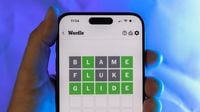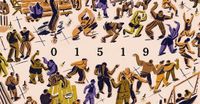Friday mornings have taken on a new ritual for millions: a hot cup of coffee, a quiet moment, and the anticipation of those first five blank squares. For Wordle fans around the world, August 15, 2025, brought puzzle number 1,518—and with it, a solution that both challenged and delighted: LEVEL.
Wordle, the daily five-letter word guessing game, erupted onto the scene in 2021. Its premise is simple but addictive: players have six attempts to guess a single five-letter word, receiving color-coded feedback after each try. Letters in the correct position turn green, correct letters in the wrong spot show yellow, and incorrect guesses are grayed out. The game’s daily word is the same for everyone, creating a sense of shared challenge and camaraderie across time zones and continents. According to The New York Times, which purchased Wordle in early 2022, players collectively played Wordle 5.3 billion times in 2024—a staggering testament to its enduring appeal.
On this particular Friday, the answer LEVEL was both a nod to the game’s own even-handed design and a subtle test of players’ attention to detail. As PC Gamer pointed out, "There are two reused letters in today's word, so this might be a tough game." Indeed, repeated letters often trip up even seasoned solvers, especially when the word appears so simple at first glance. LEVEL, defined as a perfectly horizontal surface or, in another context, a playable stage in a video game, fit the bill for a Friday brainteaser. The word starts with L, contains only one vowel, and features a pair of repeated letters—facts that were all highlighted in the day’s hints and guides.
For those who struggled, the internet was awash with clues. PC Gamer offered a cryptic nudge: “Flat, horizontal, even.” Other outlets, such as Tom’s Guide, broke things down further: “The first letter of the Wordle answer on August 15, 2025, was L,” and “There is a pair of repeated letters in today's Wordle answer.” These incremental hints have become a hallmark of Wordle culture, with entire communities springing up to trade strategies and celebrate (or commiserate) over the day’s solution. On social media, the hashtag #wordlereview provided a space for players to share their experiences, from triumphs to near-misses.
The challenge of LEVEL was reflected in the statistics. According to The New York Times Wordle Review, the average solver needed 4.6 guesses out of the allotted six—a rating considered moderately challenging. For some, the repeated E and L were a giveaway; for others, they proved a stumbling block. As one reviewer noted, “Our testers let us know how many guesses out of 6 it took them to solve the puzzle. If they miss the word, we count it as 7 guesses.” It’s a gentle reminder that even the most straightforward words can become slippery in the context of Wordle’s limited guesses and the pressure of maintaining a win streak.
And speaking of streaks—Wordle’s built-in stat tracking has become as much a part of the ritual as the puzzle itself. Players who log into their New York Times account can monitor their ongoing streaks, win percentages, and average guess counts. For many, the daily streak is a badge of honor, and missing a day (or failing to solve the puzzle) can feel like an outsized defeat. But as Tom’s Guide reassured, “Not to worry if you didn't figure out today's Wordle word. If you made it this far down the page, hopefully you at least kept your streak going. And, hey: there's always another game tomorrow.”
For newcomers, the rules are refreshingly straightforward. Players enter a five-letter word, receive feedback, and iterate. There’s no time limit, and the game refreshes at midnight local time, ensuring everyone gets a fresh shot each day. The simplicity of the interface—just a grid and a virtual keyboard—belies the depth of strategy involved. As PC Gamer explained, “Generally you want to pick something with a good mix of common consonants and vowels in it as your Wordle opener, as this is most likely to return some early green and yellow letters. Words like SLATE, CHIME, and REACT all work, but feel free to find your own favourite.”
For those who can’t get enough, a New York Times subscription unlocks an archive of more than 1,500 previous puzzles and access to the Wordle Bot—a tool that analyzes your guesses and offers personalized feedback. It’s a way to relive past challenges and sharpen your skills for future ones. As Tom’s Guide noted, “If you have a NYT subscription that includes full access to the publication's games, you don't have to stop after a single round of Wordle. You'll have access to an archive of more than 1,500 previous Wordle games.”
The phenomenon of Wordle has also inspired a host of imitators and spin-offs, from games focused on numbers and geography to those that challenge players with longer words or more obscure vocabulary. Yet the original remains the gold standard, thanks in part to its elegant design and the daily sense of community it fosters. As PC Gamer observed, “Wordle is not getting harder! There will always be the occasional day where the answer is the name of a body part, has a sneaky double vowel, or a word obscure enough to send everyone rushing off to a dictionary. But the daily answers, edited by Tracy Bennett, are still a good mix of common terms and tougher challenges.”
Beyond the gameplay, Wordle has become a canvas for creativity and connection. The New York Times regularly features artists whose work accompanies the puzzle, such as Ryan Hartley Smith, whose illustrations explore themes of community and resilience. These collaborations add a layer of cultural resonance to what might otherwise be a fleeting digital pastime.
As the day’s puzzle fades and anticipation builds for the next challenge, Wordle’s enduring appeal is clear. It’s a game that rewards both logic and intuition, offers a daily dose of satisfaction (or humility), and connects people across the globe in a shared pursuit of that elusive five-letter solution. For August 15, 2025, the answer was LEVEL—a fitting word for a game that continues to strike just the right balance.


